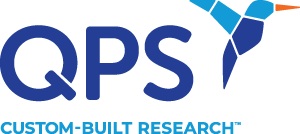In 2003, while recognizing the 50th anniversary of the discovery of the double helix, researchers announced that the human genome had been sequenced — at least most of it. The achievement followed a decade of work by hundreds of scientists around the world. The result was a human genome sequence that was about 92 percent complete. Still, the Human Genome Project was reported as “essentially” finished and celebrated as a marvel. Parts of the genome — highly repetitive bits of DNA — remained out of reach due to the limits of technology. Over the years, as technology improved and became less costly, scientists gradually started filling in the gaps and correcting errors.
The Telomere-to-Telomere (T2T) consortium, a community of researchers representing about 30 institutions around the world, were determined to produce the first gap-free human genome using more modern methodologies. The consortium is co-led by Karen Miga, a geneticist at the University of California, Santa Cruz and Adam Phillippy, a bioinformatician at the National Human Genome Research Institute (NHGRI). Miga wanted to identify the exact sequences of the “satellite” DNA that make up centromeres. Phillippy was applying new sequencing technology that could read longer stretches of DNA than was previously feasible. The two researchers started working together after meeting at a conference and gradually spurred on others as they reported their progress.
Minding the Gaps
The T2T consortium reported their findings in the March 2022 edition of Science through a series of papers that filled in the gaps. On the day Science published the research, the team announced on Twitter that it had also completed the Y chromosome sequence. The newly completed genome, known as T2T-CHM13, consists of 3.055 billion base pair sequences.
“Generating a truly complete human genome sequence represents an incredible scientific achievement, providing the first comprehensive view of our DNA blueprint,” said Eric Green, NHGRI director, in a press release. “This foundational information will strengthen the many ongoing efforts to understand all the functional nuances of the human genome, which in turn will empower genetic studies of human disease.”
The new findings reveal details about regions of chromosomes that were especially difficult to sequence, including:
- Telomeres, the regions of repetitive DNA sequences at the end of chromosomes
- Centromeres, the linking regions at the middle of chromosomes that play a role in replication
- The short arms of five chromosomes containing genes that code for the RNA used to make ribosomes, which produce proteins in cells
Unique Cell Line Simplifies Task
T2T’s success started with cell line selection. The researchers used a cell line derived from a complete hydatidiform mole, a type of non-viable pregnancy that occurs when a sperm enters an egg that does not have its own set of chromosomes. The fertilized egg copies the sperm’s 23 chromosomes, yielding a mass of cells with two sets of identical chromosomes. In the case of T2T’s selected cell line, the sperm provided an X chromosome. This simplified the sequencing task because it eliminated the need to sort out differences between the parents’ chromosomes. The genome’s Y chromosome came from a donor to the Genome in a Bottle program operated by the National Institute of Standards and Technology.
Will Sequencing Become Standard of Care?
The newly identified sequences and continued work from the T2T researchers will advance the potential of genomics to provide comprehensive information about variations in human DNA, which can improve understanding of genetic diseases. According to Phillippy, sequencing a person’s entire genome should become less costly and more routine in years to come. “In the future, when someone has their genome sequenced, we will be able to identify all of the variants in their DNA and use that information to better guide their healthcare,” Phillippy said. “Truly finishing the human genome sequence was like putting on a new pair of glasses. Now that we can clearly see everything, we are one step closer to understanding what it all means.”
Did you enjoy this blog post? Check out our other blog posts as well as related topics on our Webinar page.
QPS is a GLP- and GCP-compliant contract research organization (CRO) delivering the highest grade of discovery, preclinical and clinical drug research development services. Since 1995, it has grown from a tiny bioanalysis shop to a full-service CRO with 1,100+ employees in the U.S., Europe and Asia. Today, QPS offers expanded pharmaceutical contract R&D services with special expertise in neuropharmacology, DMPK, toxicology, bioanalysis, translational medicine and clinical development. An award-winning leader focused on bioanalytics and clinical trials, QPS is known for proven quality standards, technical expertise, a flexible approach to research, client satisfaction and turnkey laboratories and facilities. Through continual enhancements in capacities and resources, QPS stands tall in its commitment to delivering superior quality, skilled performance and trusted service to its valued customers. For more information, visit www.qps.com or email [email protected].






